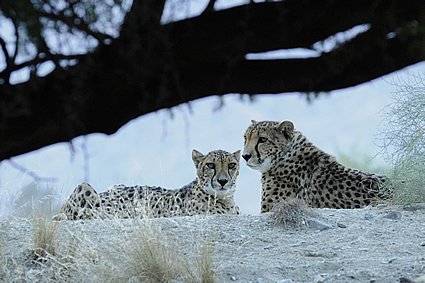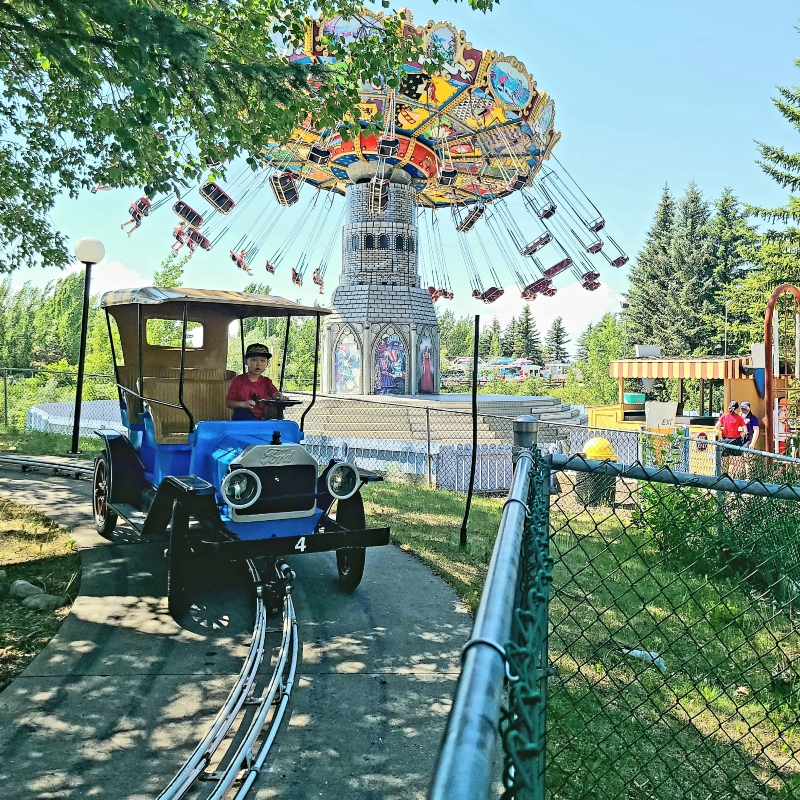There is more to Palm Springs
The appeal of this location extends far beyond palm trees and golf courses

So the old RV is gassed up, tire pressure is good, oil and water is perfect and the refrigerator is stocked. Now the question: Is it north, east, west, or south?
Well, if your meanderings take you anywhere near the Palm Springs area in Southern California, be sure to include a stop at The Living Desert. No, it isn’t a golf course, tennis court, or spa. However, there are so many wondrous things to experience there, you may want to plan an overnight at a local RV park and come back a second day.
Founded in 1970, the Living Desert is that rare combination of conservation, education and fun. It consists of 1,200 desert acres—encompassing a zoo, botanical garden, conversation centre, nature preserve and so much more. All set against the backdrop of majestic mountains, placed there many moons ago—ironically—courtesy of the Ice Age.
From Arabian oryx, to reticulated giraffe—African cheetah to Mexican wolf, you’ll find an incredible array of fascinating desert wildlife, all in natural habitat surroundings. Like Eagle Canyon for example.
At Eagle Canyon, you can view magnificent golden eagles in flight; come face-to-face with a mountain lion as it prowls along its territory. Scan the area and spot a badger or shy fennec fox, or maybe watch the javelina rout for food. For your information, a javelina is a collard peccary, which is a medium sized mammal. But you knew that!
At the Living Desert you can also catch a glimpse of rare, Mexican gray wolves that sit and gaze regally from atop their ridge. You may gaze back, or spy a graceful cheetah bounding through its territory (don’t bound with it!) But bounding or not, you are in for a truly memorable experience.
Fluttering wings
Speaking of memorable, while you’re there you should stop at the Fanciful Flyers pavilion. It’s a 3,000-square-foot, walk-through exhibit, filled with hundreds of fluttering butterflies and a dozen zippy hummingbirds, all within the setting of a tranquil garden. It’s a visual delight, like a Disney movie, only live and in living colour.
The thirty or so species of butterflies in the garden are all from North America, many from the desert southwest. And they are as colourful as their names; painted lady, tiger swallowtail, orange-barred sulphur, luna moth and zebra longwing.
The hummingbirds are all from the desert southwest and include the Anna’s, Costa’s, Rufous and broad-billed hummingbirds. Position yourself between a hummingbird and the sun and you will be amazed at the iridescent colors that adorn the male’s gorget. To us uninitiated birdwatchers, that’s their neck area.
The garden also includes over 60 species of butterfly- and hummingbird-friendly plants. Speaking of plants, be sure to stroll through the Living Desert’s beautiful Botanical Gardens, which includes geographic replicas of areas as diverse as Baja, California’s Viscaino Desert and the exotic deserts of Madagascar. Feast your eyes on over 1,200 varieties of plants, all indigenous to the far flung deserts of the world.
May I have a word with all model train enthusiasts? Imagine almost a full acre of G-scale model trains (twice the size of Lionel trains), running on more than 3,000 feet of track, in beautiful, realistic settings like Mount Rushmore, a California logging and mining town and the south rim of the Grand Canyon. Actually, there’s no need to imagine it. It’s all there at the Living Desert. With 13 to 15 separate trains, running seven days a week, it’s a moving dream come true for all model train lovers.
All aboard!
There are so many attractions at the Living Desert, I couldn’t fit them all into one article, but a couple of others are well worth mentioning. The new Discovery Center for example—a fascinating permanent exhibit, designed to help both children and adults understand and appreciate the amazing resource that is Southern California’s Coachella Valley. On the other hand, you may want to visit Village WaTuTu, where you can take an African safari and experience a culture that is a world away, without leaving the country.
If you want to do a little more research before you roll, just log onto LivingDesert.org. In the meantime, here’s wishing you a safe, exciting and rewarding journey. And I leave you with this travel thought from English writer G.K. Chesteron: “The whole object of travel is not to set foot on foreign land; it is at last to set foot on one’s own country as a foreign land.”
About the writer:
Frank Furino is a former staff director for ABC News/Sports and a TV writer/producer, whose credits include “Dynasty,” “Dallas,” “General Hospital” and more. He is currently co-founder and president of a Marketing Agency in Palm Desert, California.






